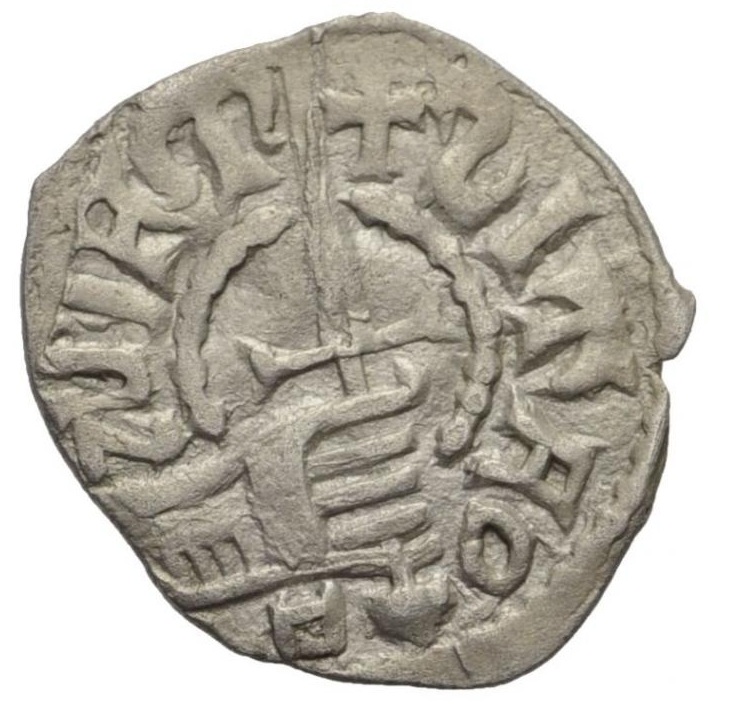Heh, Mark beat me to it. Those are the same two swords I was talking about.
| J.D. Crawford wrote: |
| Heh, Mark beat me to it. Those are the same two swords I was talking about. |
Aha! What do I win?! Anyway, at least we are in complete agreement. :)
| J.D. Crawford wrote: |
| For a detailed discussion and pictures, see Marko Aleksic, 'Medieval Swords from SouthEastern Europe.' Its probably the best source of information on this topic and a must-have for anyone interested in this topic. It shows well how odd Brazil nut forms persisted and developed in Central-Eastern Europe after Western Europe moved more into other styles. |
Aleksic also has an article that is even more specific to this discussion, titled 'Swords with pommels of type N'. It should still be available online... He adds a few more examples of each of the subtypes covered in the book. It mostly reuses the same illustrations from his book however, so not much new to offer on that front.
I have made an unexpected find. It's on a late "crusader" coin, dated to the second half of the 14th century. It is said to be part of the Licostomo Genoese "colony". The obverse side of the coin is ordinary enough, but the reverse depicts a hand holding a sword, and not a "dolch" as the German description of the coin indicates. The pommel looks to be a brazil nut.
Judging from the cross guard shown, the coin could well be from the second half of the 14th century, although it also might be a bit earlier, too. My point being, the dating is plausible enough.
Some might be wondering if the brazil nut is actually meant to be a letter in part of the legend. The text on the reverse reads:
Rs: + MANU F-ORTIS
Notice the "M" is to the left of the blade and the legend is counter-clockwise on the coin. If you look closely, the pommel is between the "F" and "O", represented by the dash in the above transcription.Thus, the pommel is indeed a pommel, and not part of the letters.
The only other claim one might make is that the pommel might be deformed from excessive use of the same die and therefore may not have originally been a brazil nut. I do not think this is likely. The image is quite sharp, and even the legends, which are very often corrupted on medieval coins, are quite clean. Even if one argues the coin is a counterfeit, it would obviously be a counterfeit of a real coin- and one with a pommel very much the same shape. In my view, it is likely this is a faithful representation of a 14th century brazil nut pommel.
Source: Solidus Numismatik Premium-Auktion 31, Lot 188, June 30 2018.
 Attachment: 134.98 KB
Attachment: 134.98 KB

Judging from the cross guard shown, the coin could well be from the second half of the 14th century, although it also might be a bit earlier, too. My point being, the dating is plausible enough.
Some might be wondering if the brazil nut is actually meant to be a letter in part of the legend. The text on the reverse reads:
Rs: + MANU F-ORTIS
Notice the "M" is to the left of the blade and the legend is counter-clockwise on the coin. If you look closely, the pommel is between the "F" and "O", represented by the dash in the above transcription.Thus, the pommel is indeed a pommel, and not part of the letters.
The only other claim one might make is that the pommel might be deformed from excessive use of the same die and therefore may not have originally been a brazil nut. I do not think this is likely. The image is quite sharp, and even the legends, which are very often corrupted on medieval coins, are quite clean. Even if one argues the coin is a counterfeit, it would obviously be a counterfeit of a real coin- and one with a pommel very much the same shape. In my view, it is likely this is a faithful representation of a 14th century brazil nut pommel.
Source: Solidus Numismatik Premium-Auktion 31, Lot 188, June 30 2018.

Last edited by Craig Peters on Sun 17 Jun, 2018 6:57 pm; edited 1 time in total
Or at least a faithful 14th Century representation of a brazil nut pommel. Subtle difference, but potentially significant. :)
PS. It may be noteworthy that the overall design is very similar to the sword in the very first image in this thread, and the items are of a likewise similar date, too. So even if this was an instance of retro design aesthetic back in the day, so to speak, it wasn't a one-off instance.
PS. It may be noteworthy that the overall design is very similar to the sword in the very first image in this thread, and the items are of a likewise similar date, too. So even if this was an instance of retro design aesthetic back in the day, so to speak, it wasn't a one-off instance.
Page 2 of 2
You cannot post new topics in this forumYou cannot reply to topics in this forum
You cannot edit your posts in this forum
You cannot delete your posts in this forum
You cannot vote in polls in this forum
You cannot attach files in this forum
You can download files in this forum
All contents © Copyright 2003-2006 myArmoury.com — All rights reserved
Discussion forums powered by phpBB © The phpBB Group
Switch to the Full-featured Version of the forum
Discussion forums powered by phpBB © The phpBB Group
Switch to the Full-featured Version of the forum